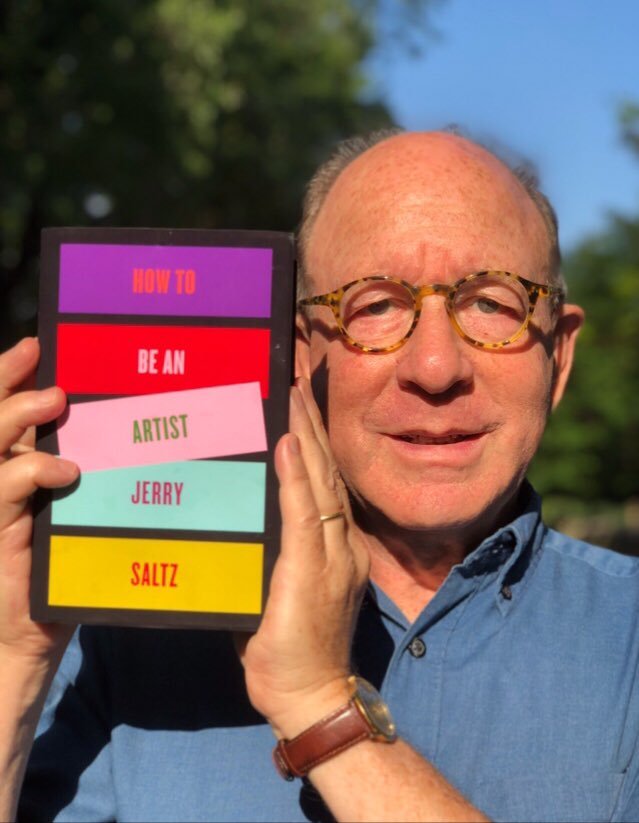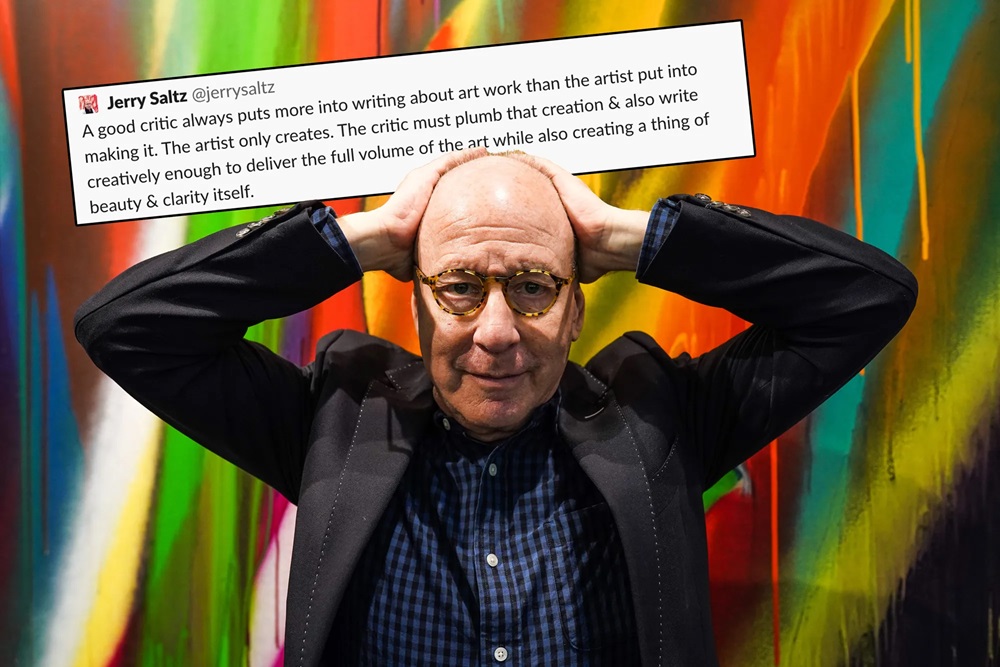Most entries here (in ‘Art is Life’, a book by Jerry Saltz) are hosannas for established luminaries and tributes to late, great legends. Saltz sings the praises of Kara Walker and Robert Gober; he mourns the losses of Chris Burden and Louise Bourgeois; he celebrates the lives of Dorothea Tanning and Beauford Delaney; he parses the enduring magic of prehistoric cave paintings, ancient marbles and Renaissance masters. Although Saltz blasts the usual targets — speculative collectors, unscrupulous auction houses, gender bias at museums — the tenor is overwhelmingly positive, writes Zoë Lescaze in the NewYork Times entitled ‘Jerry Saltz Plays It Uncharacteristically Safe’ article.
Zoe Lescaze briefly explains Jerry Saltz and his writings in that short essay. Reading Jerry Saltz means exploring the genuine nature of art and aesthetics; no jargon or complex sentences exist, but they are philosophically insightful. What art is for Jerry Saltz results from becoming through mediums and materials. In the book ‘How to Be an Artist’ (2020), Jerry Saltz asks, ‘What is Art? Then, Saltz warned you first when trying to be an artist because ‘there’s no single road to glory’, and ‘everyone takes a different path’ to reach the destination, and there is no such destination too.
We may all know the background of Jerry Saltz; he became an eminent critic without a prestigious college degree and started writing at 40. He was a long-haul truck driver before and after his art-critical career started. He earned enough knowledge about the route of Art from artists around the world as substantial knowledge rather than from his educational pieces of training. Jerry Saltz starts to talk with artists from around the artist community regardless of their presence in the art scene. For Jerry Saltz, art constantly raises many persistent, strange, and even tricky issues, and artists try to overcome these odd things. But sometimes, that process is quite intimidating and cynical.
One day, a painter, Bridget Riley, told Jerry Saltz how you knew if your Art was working, and ‘if it doesn’t feel right- it’s not right’. Another artist, Carrol Dunham, told Saltz that Art is quite different; “a craft-based tool for studying consciousness. “Anyway, your talent is like a wild animal that must be fed. One is evident for Saltz: if you want to be a great artist, you might ask what art is and find out the answer yourself, not from any text but from life.
Art is a visual language, and your inquiry and answers should be in a visual format. Saltz talks about visual language- a non-verbal, and the power of that language; how does the blink of an eye produce many meanings in a language? In some situations, that ‘eye of blink’ may make more meaning than anything else. Sometimes, words are not enough to produce accurate meanings. Jerry Saltz explains the creative process of Art because no one knows the result of what they are making, as Painter Brice Marden says to Jerry. Jerry Saltz’s writings are significantly valuable because he uses artists’ observations and understanding to write about Art.

Saltz shares art concerns and hopes to bring more questions than answers from the audience and readers. And He has told you there is no problem if you are not working, but if you are working, problems start. Then Saltz gives some information for beginners: do your work daily, and ‘give your work at least as much time, thought, energy, and imagination as you do other aspects of your daily routine (p15). Jerry Saltz split his books into six steps and 63 chapters. The first step is to realise that you are an amateur; in the second step, Saltz talks about how to begin; and in the third step, he writes about learning to think like an artist; and in the fourth, enter the art world, in fifth, survive the art world, and the final steps, attain the Galactic brain. These are the divisions and categories of the most popular books of an art critic.
What is Art for Jerry Saltz is birdsong; it’s made of patterns, inflexions, shadings, and shifts—all things that have an emotional and perceptual impact, even if we can never really translate their meanings, he writes in his first chapter of the first step. When we read this statement about Art, we realise one of Saltz’s Ideas regarding this book is so poetic. Most of the time, poetic language may help you describe what art is if you are trying to explain what art is. What is your identity when you start doing Art, and always move between the lines? Saltz reminds you one thing; ‘drawing within the lines is for babies’. An artist is telling their own story and getting an audience to applaud.
What is the role of feelings in Art? Saltz talks about what it is like to do Art. The most important thing is that ‘all Art comes from love— love of doing something, as Saltz writes. The situation of the artists is not a matter for an Artwork because everything, including the results, is based on what they did and are doing. According to Saltz, if you are an artist, you are a pearl diver, rock collector, and shell hunter combining the beach of imagination. A significant observation about the artists is that ‘you’re an archaeologist of forms, tropes, sensations, spaces, light, identities.
What is an Idea for Art? Sol LeWitt told Saltz that the idea becomes the machine that makes the Art. An idea becomes an artwork’s inner soul, and art becomes a mesmerising experience for the one who has done that and engages. Work will help the artists reach somewhere and reach the audience at the same length and intensity. What is the rule when artists begin to work? That is just done, and that will lead you somewhere.
Jerry Saltz even gives artists people the best of when work began. For Saltz, morning is the best time to start working because the pesky demons take you down afterwards. Saltz often talks about the comeback of the masters and gives an example of Cézanne paintings. Sometimes, Saltz talks to the audience about what to see in paintings: When you look at art, make the subject matter the first thing you see, and then stop seeing it. Start looking into the art; find what needs are expressed or hidden and what is behind the narrative. A work of Art is a rich estuary of material, personal, public, and aesthetic ideas. Let its water pass through its banks to reach you.
Jerry Saltz is an aesthetic of the Art world. Saltz writes about Art, artists, audiences and creativity without a theoretical overburden. Jerry Saltz is critical because he brings a new perspective to the art world. Where do we start seeing Art, and how can it reach banks of meaning? How far is that imaginative space? What is that and this? When we engage with an artwork, what are we doing? Usually, our concerns about experiencing Art are too complex than we believe.
Jerry Saltzian’s idea of art is to give open space to artists and audiences as a way of making art and engaging them more or less the same. Making and engaging with art are the same processes under the umbrella term for art.
How to Be an Artist? Find Out What Renowned Art Critic Jerry Saltz Has to Say

Krispin Joseph PX, a poet and journalist, completed an MFA in art history and visual studies at the University of Hyderabad.





